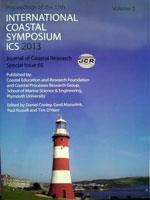Cho, J. M., Lee, D. H., Lee, M. R., Cho, J. H., Yun, H. S., Jeong, T. J., Jang, A. and Kim, T. Y., 2013. Comparison of Geostrophic Current Estimation around the Korean Peninsula from Remote Sensing-based MSS models
Altimetry satellites like Geosat, ERS-1/2, Envisat and Topex-Poseidon, which have been developed and deployed since the 1970s, have collected immense arrays of data on the sea, and the data thus gathered have been used in oceanography as well as in a variety of scientific disciplines, such as geophysics and geodesy. The mean dynamic ocean topography or Sea Surface Topography (SST), obtained by calculating the difference between the Mean Sea Surface (MSS) and the geoid surface, plays a critical role in determining the earth's shape and geoid as well as in the precision modeling of the earth's gravity field, ocean currents, and tidal waves. In the study, the MSS_CNES_CLS10 (Centre National d'Etudes Spatiales Collectre Localisation Satellites 2010) and DTU10MSS (Danmarks Tekniske Universitet 2010) MSS models calculated with the data obtained by a number of altimetry and gravity observation satellites, such as Topex/Poseidon, CHAMP, and GRACE, as well as a geoid model calculated from the EGM2008 gravity field model, were employed to determine the SST around the Korean Peninsula and to calculate its geostrophic current, the key source of the sea surface current. The SST and geostrophic current were also calculated using the MSS_CNES_CLS10 and DTU10MSS MSS model calculated from the satellite data, as well as a geoid model calculated from the EGM2008 earth's gravity field model, with a maximum degree and order 20 In the study, comparing calculated velocity with measured data and previous researches, calculated velocity of current is as 2 to 4 times faster than measured velocity at the East Sea which changes depth rapidly. However, it is similar to velocity and direction at over 40km far from the coastal area and the Yellow Sea which changes depth gradually. Also, as a result of comparison with two MSS models, MSS_CNES_CLS10 model is more accurate than DTU10MSS model, but the difference was trivial. If it is possible to estimate the movement of oceanic current which are affected by wind, pressure, density, tides and temperature of ocean, and add onto method of estimating geostrophic current used in this research, we will be able to estimate in more detail at the oceanic current. This study would provide some useful data for maritime voyage and fishery.





